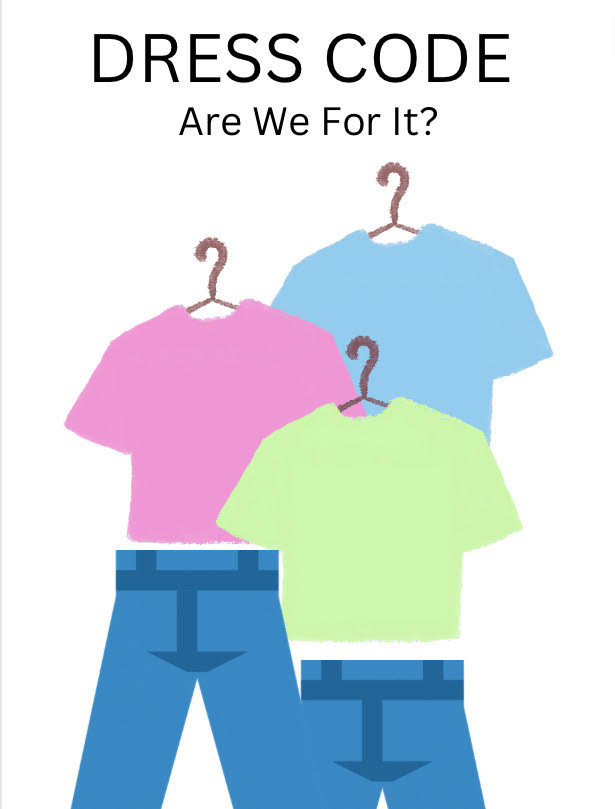Dress Code: “Expression” Or “Profession”?
October 4, 2022
A dress code is a set of rules that specifies what a group of individuals are required to wear in order to create an intended environment. Some are “black tie” events; others, “no shoes required.” But, what is the type of environment is Elkhart High School hoping to establish with its dress code. And, how do students and staff feel about that?
First, one must know what the rules are. In short, here are the requirements:
- Outerwear (coats, hats, gloves, sunglasses, etc.) must be removed once inside the school.
- Shorts, dresses, skirts, skorts or other similar clothing should be at least finger-tip length when standing.
- Clothing should fully cover, when standing or seated, the stomach, buttocks, back, shoulders, and chest. Boys’ shirts must be tucked in. Clothing that is sheer, tight, low-cut, or sleeveless shall not be worn.
- Clothing must fit appropriately, meaning nothing too tight or too baggy.
- Pants are to be appropriately sized. A belt is required for pants with belt loops. Pants are to be belted at the waist. Pajama pants are not allowed. Pants with holes in them are not allowed.
- Shoes are to be worn at all times. Sandals and flip-flops are permitted as long as they fit securely enough to provide safe movement.
- Clothing, accessories, jewelry, hair coloring and body art should not be offensive or distracting. Examples of offensive or distracting items include:
- References to sex, illegal drugs, tobacco, alcohol, or weapons
- Gang-related
- Obscene, rude, or libelous
- Threatening
- Disrespectful of the Guidelines for Good School Order or school image
Many staff and students agree with–or are at least willing to comply with–the dress code, feeling that there should be no problem following it. They note that enforcing a dress code can promote a professional environment for students to learn while also teaching them how to prepare for the workforce. Holes in pants, leggings, and midriffs just don’t fit that pattern. A few even believe that EHS could solve the entire problem by implementing a school uniform; therefore, students wouldn’t have to worry about being “dress coded.” Providing a uniform for students to wear could also decrease bullying, fights, and other distractions by placing everyone on the same playing field, they claim.
However, numerous students disagree wholeheartedly with the rules within the dress code. These students think that the dress code unfairly targets a certain demographic of student–often based on body type or social status –penalizing one while turning a blind eye to the other in terms of consequences. They would prefer rules that were a “one size fits all.” As a result of the inequity, they end up feeling as though the dress code is “pointless”–that they might as well allow kids to wear whatever they want without being criticized.
Clothing definitely creates statements. It is a teen’s main form of self-expression. Strict dress codes may restrain that creativity–but it may also keep people from showing up in their birthday suits!









Jocelyn Moreno • Oct 6, 2022 at 11:05 am
I really like that you interviewed both students and administrators. I also like how you showed our dress code as well.